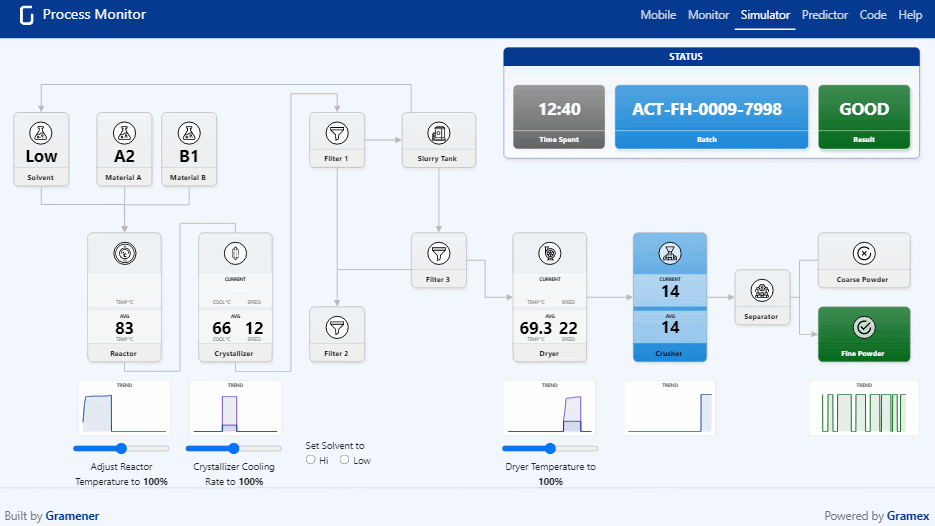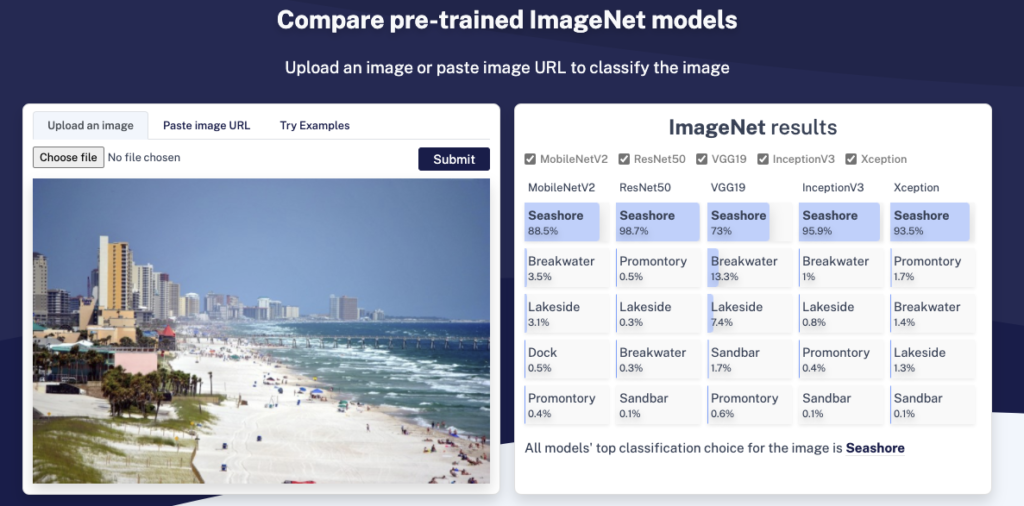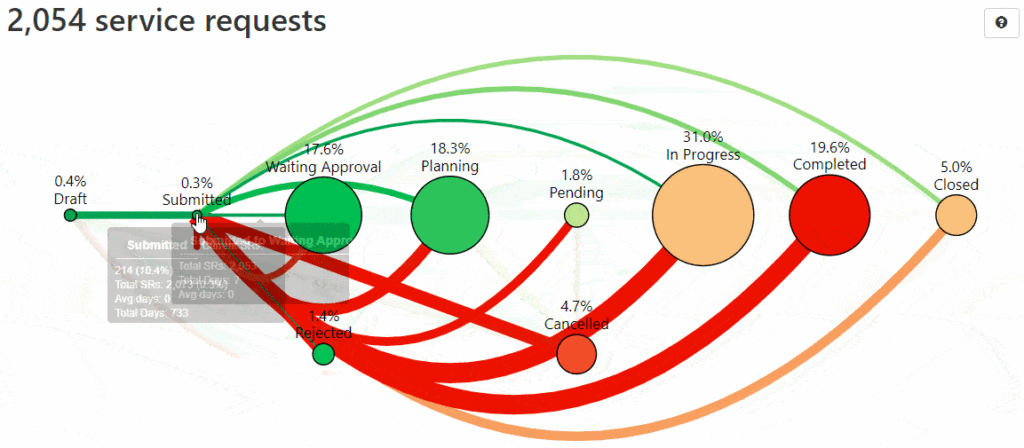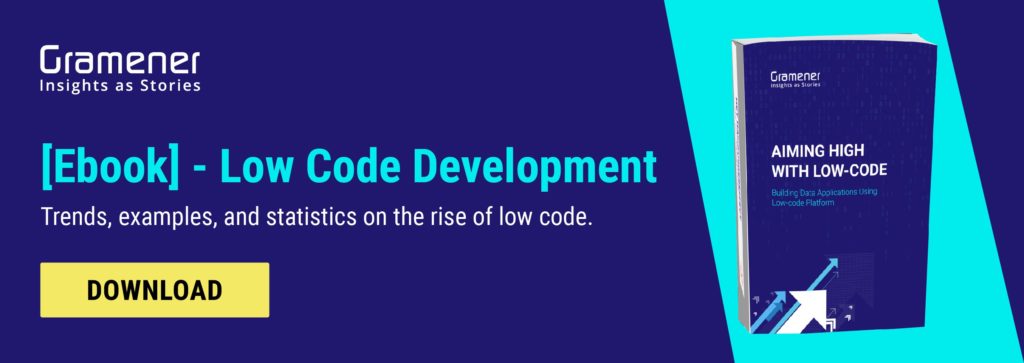Hard-hitting facts from Market Research Future show that the global data analytics market will reflect a CAGR of 30.08% by 2023 surpassing a valuation of USD 77.64 billion. With growing competition in the enterprise market, organizations are trying to build and deploy solutions faster. Go-to-market time of solutions and speed of development are key drivers for products that are aimed to gain a competitive advantage. Smarter solutions developed with Machine Learning or AI require months of rigorous algorithm training before deployment. Emerging low-code Machine Learning platforms can help data science teams deploy solutions faster by just assembling components and microservices.
Table of Contents
What is a Low-Code Machine Learning Platform?
Low-code means developing a solution without writing a single line of code unless you want to, which creates opportunities for customization. Low-code platforms are different from no-code platforms. In no-code, the solution is completely built by drag and drop components, leaving literally no space for customization.
In short:
- No-code platforms restrict users from accessing and modifying the pre-defined code structure of the product or application.
- Low-code platforms provide pre-built components along with access to the backend code. This benefits the technical users who tend to make modifications for customizing their solutions and adding more functionalities to it.
Over the years, data scientists and Machine Learning experts have concluded that solutions with heavy code are more prone to bugs and coding errors.
Moreover, there are sets of codes that are repetitive in a Machine Learning algorithm. This makes the code structure heavy and complex to maintain.
A low-code Machine Learning platform creates components, templates, and microservices that replace the repetitive code structure, reducing the load from the algorithms. This adds value to developers and data scientists offering them a wide array of productive experiences for building, training, and deploying models faster.
Low-code platforms can never entirely replace hand-coded algorithms. However, they can help citizen developers take control with ML building blocks to accelerate prototyping.
How Low-code Machine Learning Solves Customized Business Problems
Customized data science solutions are perfect to tackle particular business challenges. You can leverage Python, D3, R, and anything else to create whatever you want, but at the cost of speed and more go-to-market time.
On the other hand, we have solutions such as Excel, Tableau, and Power BI that offer rapid development at scale but offer very limited flexibility. Although the process of collating, analyzing, and visualizing the data is fast, you can’t create anything you want.
After years of experience in building data analytics solutions, Gramener identified the need for a platform that can offer the best of both worlds. Hence, we built Gramex, a low-code analytics platform to help developers build data science solutions 50% faster.
Gramex comes in two versions – Open source and enterprise version. You can know more about our open source low code platform, try it for a few days and contact us to know the features and support services for the enterprise version.

Gramex lies at the sweet spot – the intersection of custom development and BI tools. It offers a wide range of components that builds flexible data applications cheaper and faster. Developers and data scientists need not build a solution from scratch. They can choose from our wide range of low-code microservices and assemble Machine Learning solutions in a matter of days.
Nowadays, business users seek solutions for customized problems. We realized this when one of our clients wanted to monitor the organic synthesis process in their factory to predict the quality of the production.
The Problem
The client’s factory produces tablets.
They claimed that if 90% of the powder particles are fine, the final batch of the tablet turns out to be good. On the contrary, if the batch had less than 90% fine particles, the final batch resulted in wastage.
There was no way to predict the quantity of coarse or fine particles during or before starting the mechanical process. Hence, it was difficult to predict the quality of the tablets.
The client requested to create a solution that can help them monitor every single factor that contributes to tablet manufacturing, such as temperature and crushing time. Based on that, they wanted the model to flag the batch in advance if the particles are coarser than the required powder quality.
The Low-Code Machine Learning Solution
Our data scientists leveraged our low-code analytics platform to create a Machine Learning model that uses real-time data of reactor temperature, crystallizer cooling rate, stirring speed, and more to predict the quality of the batch.
Once predicted, the machine operators can take measures such as a change in controls, extending the crushing period, or restarting the process.
This was a fairly customized organic synthesis Machine Learning model to monitor all the factors on a floor layout, making it easy for the client to understand what is going on where.

The solution has 4 components:
- Mobile Alert: Open your mobile and put it in your pocket. You will get an alert when quality drops.
- Floor Monitor: Display on a large screen on the plant floor. Operators can track in real-time when quality drops.
- Predict Quality: Find out if a batch will produce a good result or a bad result — without running it.
- Simulator: Re-run the last batch to explore the minimal change required to improve batch quality.
These four views were built in just 3 days using Gramex’s 8 components, replacing over 2,500 lines of code.
Why Low-Code Development Approach is Widely Accepted
Microsoft’s Azure-led Machine Learning platform comes with a drag-and-drop structure.
The low-code development approach addresses the need for Machine Learning experts who are not programmatically inclined. This situation is supported by a study from Mendix which states that 24% of low-code users have 0% programming knowledge.
Organizations with less experienced data science teams enjoy the privilege of selecting a dataset and analysis parameters while the hard work is pushed to the algorithms.
PowerApps from Microsoft is yet another low-code revelation that allows visual wiring of applications to low-code developers. It offers equal opportunities to professional developers to get a jump on writing codes.
It is evident how companies like Microsoft have understood the growing demand from large enterprises for low-code platforms.
Use Cases of Low-Code Platform
Deep Learning Image Recognition
We released a beginner’s utility, Compare ImageNet to compare classification results from SotA Convolutional Neural Network architectures. The tool enables beginners and non-programmers to see how off-the-shelf pre-trained deep learning models classify their own real-world images. The model uses pre-trained (MobileNetV2, ResNet50, VGG19, InceptionV3, Xception) weights from TensorFlow Keras.

Business Process Data Visualizations
Business processes are often lengthy. There are several tasks that take a significant amount of time. Multiple stages such as drafting, submission, approval, planning, progress, and closure, although important, add to the delay. Visualizing the areas where the business process is stuck can enable business users to take quick actions. A low-code platform can build any visual with no constraints. The workflow optimization solution below uses a group-means algorithm to identify the root cause of the delay.

Insightful data storytelling apps
We believe insights are analyses that are big, useful, and surprising. By automating patterns of analysis into libraries, we make it easy for developers to embed analytical components.
Insights drive business decisions and actions. A data scientist or analyst presents their analysis – what they did, and what they found. But, the enterprise users need an engaging message that tells them what to do, and why. Analysts can use low-code platforms to automate data narratives in simple languages and create insightful data stories.
The following visualization created for the World Bank is a classic example of data scrolly-telling (a scrollable storytelling method). This visual, based on the Networked Readiness Index data, was developed from 1800+ variables, automated narratives, interactive visuals, and guided exploration for insights.

Learn More About Low-code Development from Our Experts
At Gramener, we help our clients solve complex business problems by giving the power of low-code in their hands. This ensures them easy maintenance, seamless integration with any platform, and rapid deployment on any server and in-house software ecosystems.
Watch our webinar on building data and AI products with low-code hosted by Anand S, Gramener’s CEO and Co-founder, who spearheads Gramex development. This webinar focused on:
- Making the Build vs. Buy Decision
- How a low-code approach will work for your specific data/digital needs
- Production-ready use cases to evoke your thought process
The recording is available along with slides used during the live webinar.


Wohh exactly what was searchng for, apprecate t for postng.
Hello there brothers, how are you, and what you wish to say about this object, in my view its honestly amazing.
This is my first time pay a visit at here and i am really pleassant to read everthing at one place.
I believe this is one of the most significant information for me